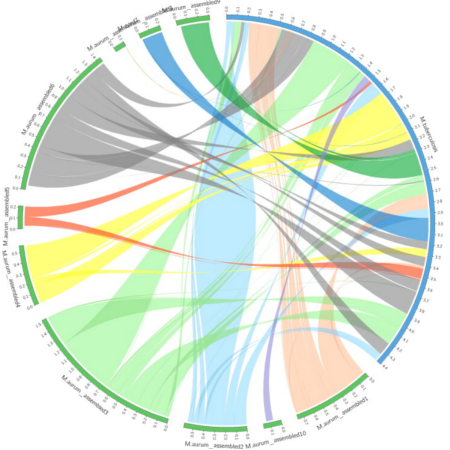Mycobacterium aurum
Abstract
Mycobacterium aurum (M. aurum) is an environmental mycobacteria that has previously been used in studies of anti-mycobacterial drugs due to its fast growth rate and low pathogenicity. The M. aurum genome has been sequenced and assembled into 46 contigs, with a total length of 6.02Mb containing 5684 annotated protein-coding genes. A phylogenetic analysis using whole genome alignments positioned M. aurum close to Mycobacterium vaccae and Mycobacterium vanbaalenii, within a clade related to fast-growing mycobacteria. Large-scale genomic rearrangements were identified by comparing the M. aurum genome to those of Mycobacterium tuberculosis and Mycobacterium leprae. M. aurum orthologous genes implicated in resistance to anti-tuberculosis drugs in M. tuberculosis were observed. The sequence identity at the DNA level varied from 68.6% for pncA (pyrazinamide drug-related) to 96.2% for rrs (streptomycin, capreomycin). We observed two homologous genes encoding the catalase-peroxidase enzyme (katG) that is associated with resistance to isoniazid. Similarly, two embB homologues were identified in the M. aurum genome. In addition to describing for the first time the genome of M. aurum, this work provides a resource to aid the use of M. aurum in studies to develop improved drugs for the pathogenic mycobacteria M. tuberculosis and M. leprae.
Figures

Citation
Phelan J, Coll F, McNerney R, Pain A, Bhakta S, Clark TG. Mycobacterium aurum genome sequence and investigating tuberculosis infection and drug resistance. Int J Mycobact. 2015; 4: 207–216.